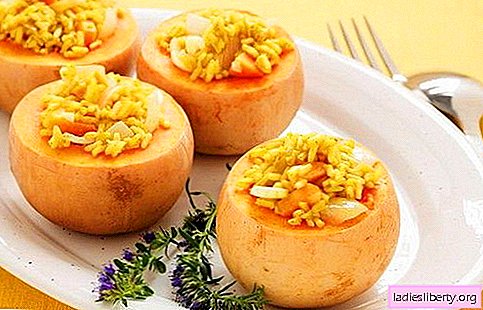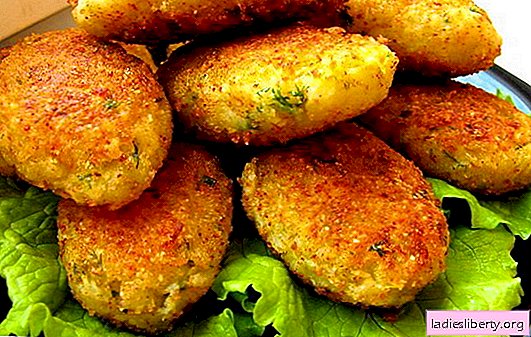
Sinusitis - acute or chronic inflammation of the mucous membrane of the maxillary sinus, which is caused by bacteria, viruses or fungi. The main symptoms are difficulty breathing. Sometimes a headache occurs. In rare cases, an endogenous form of sinusitis also occurs: pain in the upper teeth that cannot be explained in any way.
Why does sinusitis occur?
Viral sinusitis usually lasts from 7 to 10 days, while bacterial sinusitis - more than 14 days. In 0.5-2% of patients, viral sinusitis develops bacterial. The three most common causes of sinusitis are Streptococcus pneumoniae, Haemophilus influenzae, and Moraxella catarrhalis. In the past, Haemophilus influenzae was the most common bacterial pathogen causing maxillary sinus infections. Other pathogens include Staphylococcus aureus, anaerobic and, less commonly, gram-negative bacteria. Acute episodes of sinusitis can also be the result of fungal infections. They are more common in patients with diabetes mellitus or immunodeficiencies.
According to WHO, antibiotic treatment is necessary in rare cases. The effectiveness of antibiotic therapy has not been identified in studies, while side effects are possible. Most infections are caused by viral pathogens.
Folk remedies for sinusitis not only have unproven effectiveness, but can also be harmful if consumed inappropriately. Before using any herbal medicine or product products, a doctor's consultation is necessary.
Folk remedies for sinusitis: herbal medicine
1. 15% thuja oil instill 2-3 drops in the nostril. Repeat 2-3 times a day until complete recovery.
Doctor's comment: thuja is grown as an ornamental tree and is widely used as hedges. The wood is light, soft and fragrant. Canadians use the plant to make tea because of their high vitamin C content (50 mg per 100 g).
Thuja oil contains poisonous terpenes (thujones), which are antagonists of the GABA receptors. In high doses, patients have severe cramps. With an overdose of oil, death is possible. Potentially life-threatening recipe.
2. Take cyclamen juice 3-4 times a day.
Doctor's comment: cyclamen is a poisonous plant for humans. Tubers contain a toxic substance - glycosidic saponin (cyclolamine), which causes severe hemolysis, vomiting and a laxative effect. For many animals - a pig, porcupine - a plant is safe.
Symptoms after taking cyclamen: gastrointestinal upset with vomiting, severe diarrhea, malaise, abdominal pain, cramps, renal failure and paralysis. Prolonged use can be fatal. Folk remedies for sinusitis with cyclamen are dangerous to human life.
3. Bay leaf.
Doctor's comment: bay leaf is used in cooking as a spice. Laurel is also used in herbal medicine for the treatment of cough, circulatory disorders, skin diseases and rheumatism.
The clinical effectiveness of laurel has not been proven in any large randomized trial. Two cohort studies examined the potential benefits of leaves for sinusitis, but the results are disappointing: the effect is comparable to placebo. The plant will not harm, but will not bring any benefit.
4. Sea buckthorn oil mixed with water and instill 3-4 times a day.
Doctor's comment: Sea buckthorn oil contains a high concentration of vitamin C. Depending on the variety, it varies from 200 to 900 mg per 100 g. Rosehips and cherries recorded significantly higher levels of ascorbic acid: 1250 mg and 1300-1700 mg per 100 g. Oil is also contains small amounts of beta-carotene and tannins.
Sea buckthorn contains a small amount of vitamin B12, which is used almost exclusively in animal feed. There are few alternatives to vitamin B12, so sea buckthorn is an important addition to the diet of vegetarians and vegans.
Ascorbic acid is effective in preventing sinusitis in people who are involved in heavy physical exertion. If a person does not physically overload and eats well, high doses of vitamin C will not bring any tangible benefits - as the researchers at Cochrane Collaboration concluded.
Folk remedies for sinusitis: washing the nose
1. Inhalation of vapors of chamomile decoction 4 times a day.
Doctor's comment: The use of chamomile essential oil has been studied for decades due to bactericidal properties, especially with respect to gram-positive bacteria. It also has a significant fungicidal effect against fungi of the species Candida albicans. Some studies have revealed the anthelmintic effect of chamomile. In in vitro studies, the polyphenols present in chamomile adversely affected the rate of egg formation and motility of the gastrointestinal worms of Haemonchus contortus, commonly found in sheep.
Coumarin, which is present in chamomile decoctions, potentiates the action of anticoagulants - warfarin or acetylsalicylic acid. As a result, the risk of developing internal bleeding increases, which leads to serious complications. In addition, pollen found in some chamomile preparations can cause allergic reactions in humans.
Inhalation of decoction of chamomile in children and adults can cause Quincke's edema - a life-threatening side effect. A recipe is dangerous if a person has hypersensitivity to the components of the plant.
2. Inhalation with hot water.
Doctor's comment: Inhalations with hot water can not only aggravate the course of sinusitis, but also contribute to the spread of bacterial infection. Heat dilates blood vessels even more and enhances local blood flow. In rare cases, water inhalation can lead to sepsis - a fatal systemic infection.
3. Inhalation of warm vapors of clove decoction.
Doctor's comment: carnations are mainly used as ornamental plants. The largest producer of cloves in the world is Colombia. In Asia, especially in southern China, dried whole cloves are used to make tea.
Clove does not contain substances that have a significant effect on the maxillary mucous membranes. Inhalation of vapors may cause slight irritation due to the tannin contained in the composition. The recipe is not dangerous, but will not bring benefits.
Folk remedies for sinusitis: food
1. Take 2-3 times daily radish with bread.
Doctor's comment: radish covers the adult's daily requirement for vitamin C. The plant also contains protein, carotene, some B vitamins, potassium, sodium, magnesium, calcium, phosphorus, iron and enzymes. Radish oil is rich in mustard glycosides and bitter substances. The plant also has a choleretic effect. Red radish also contains a dye from the group of anthocyanins.
The anti-inflammatory effect is attributed to the high content of vitamin C. In people without hypovitaminosis C, the additional intake of ascorbic acid does not bring any benefit. Therefore, the recipe is useless.
2. Mix 30 grams of honey with a tablespoon of sunflower oil and take 4 times a day.
Doctor's comment: Honey (like other sweeteners) can be extremely dangerous for babies. When mixed with a child’s non-acidic digestive juices, an ideal environment is created for the growth of Clostridium botulinum spores, which produce toxins.
Botulism spores are one of the few bacteria that survive in honey, but are also widely present in the environment. Although such spores are harmless to adults, due to the acidity of the stomach, the digestive system of young children is not well developed to destroy them, so they can cause botulism. For this reason, it is recommended not to feed children under 12 months of age with honey or any other sweetener.
Excessive consumption of honey can harm even adults if antacids are taken. The recipe is life-threatening, especially for a child.
Folk remedies for sinusitis can slightly reduce the symptoms of a bacterial, viral or fungal disease, but are ineffective against the root cause. Long-term use of certain drugs can cause potentially life-threatening complications that require new treatment.











